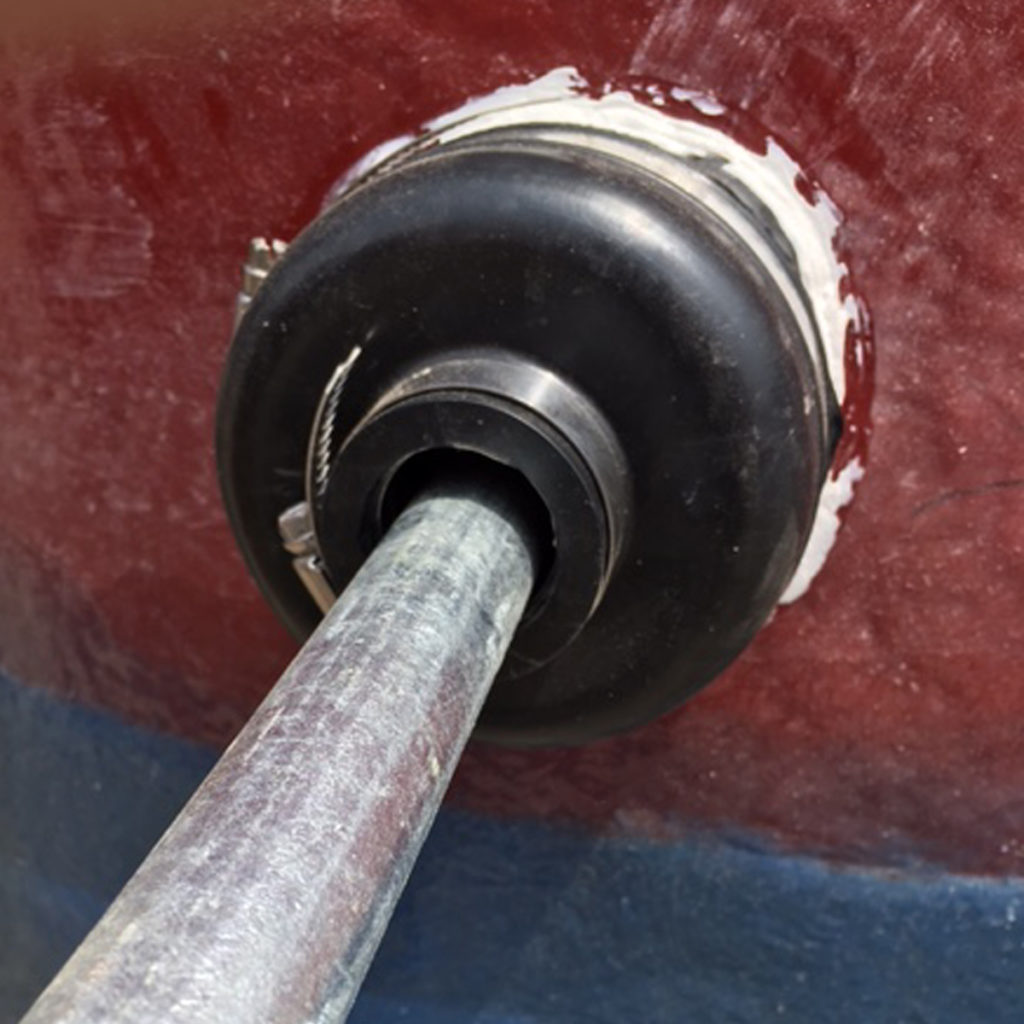
The sump entry fitting (also known as a penetration fitting) plays an important role in every underground storage and above ground storage system. The environmental protection of placing joints in a containment chamber that offers ease of access and monitoring capabilities (see Veeder-Root) greatly increases the life of the system and also provides required compliance in many circumstances. A well-designed piping system includes entry fittings (sometimes called sump entry boots). There are four main functions of sumps and entry boots:
- prevent the release of fuels into the environment
- keep groundwater out
- keep fuel leaks inside the system
- provide an accessible space for contained components
Secondary containment systems may suffer greatly from groundwater. The sump and entry fittings offer enhanced protection from very costly repairs and hazardous waste issues. When water mixes with fuels the liquids become hazardous waste and such waste requires specialists to properly remove and clean. This is a troubling and very costly service. Take the time to find the best solution for ultimate containment. Let’s examine what makes the best containment design. In this article, we will discuss the entry fittings.
Sump Entry Fittings
Sump entry fittings (also known as sump entry boots) provide a critical value in terms of security and safety. In a fairly standard three tank, six dispenser setup there can be as many as 50 to 60 penetrations of the containments sumps with piping and electrical conduit. Each penetration is a point of potential hazard and/or leak. Correct selection and installation of sump entry fittings will help you avoid costly repairs in the future. Costs to effectively repair entry fittings can be outrageous and are often times unnecessary.
There are some very important differences to consider when designing a containment system. It is possible to use a system supplier (one that provides pipe, containment, and fittings), but our team has found some significant advantages in specialization, particularly at the entry sump boot.
When choosing an entry fitting consider the following questions:
- Is the fitting a multi-hole or single-hole design?
- Is the fitting a flexible or rigid fitting?
- Which material is used to manufacture the fitting?
Single Hole Design vs Multi-Hole Design
As the name suggests, sump entry fittings are available for installation with multiple holes to drill in the containment/sump wall or installation with a single hole install. Our philosophy at ZJI is the single hole signifies fewer leak/fault points. The fewer the holes the lower the chances of catastrophe. We design our fittings with the installer and the environment in mind.
Flexible or Rigid Fittings
A ZJI sump entry fitting uses a rigid housing and a flexible boot for maximum protection and longevity. The rigid housing provides a secure seal to the container and bolts together internally for a maximum gasket-to-wall sealing pressure. The flexible boot supports the micro-movements consistent in the container environment where a fiberglass fitting is simply too rigid.
Materials
While last in our three questions this is always the most important question: Which materials are best to make the fittings? As has been the case for many years, nitrile rubber is a key material for many fittings manufacturers. Most system suppliers use nitrile rubber to this day. Why? It has proven to degrade, dry, crack, and leak. Many system suppliers won’t guarantee their entry fittings because they know this is likely and, in fact, guaranteed to fail.
This failure rate became a source of motivation for our team. Why not create a material that can withstand the harsh sump conditions and provide the safety necessary in preventing leaks? So, we did. We specifically set out to discover the very best material to use in manufacturing sump entry boots and today it is known as ProTex.
ProTex is a technologically advanced co-polymer design crafted and tested for the harsh environmental conditions found in the petroleum industry. It is non-nitrile and non-urethane. ProTex is flexible yet incredibly durable and does not dry out like other nitrile and urethane materials. It is explicitly made to handle fuels of all types.